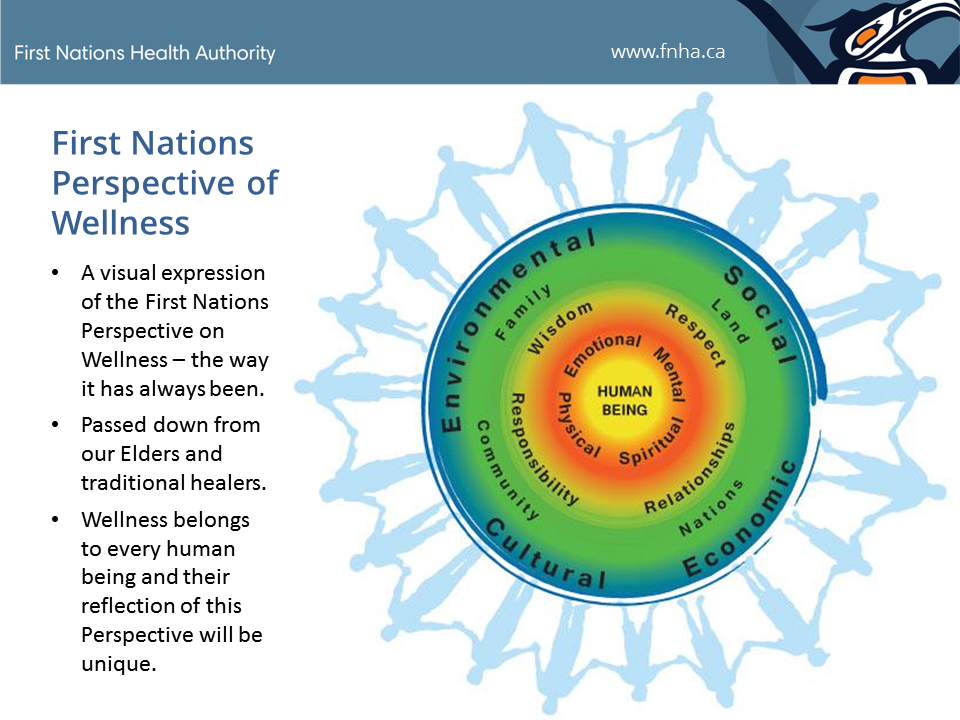 This 3-part series introduces the Indigenous[1] teaching of the medicine wheel. Reflecting on Indigenous voices from across Canada, it proposes three unique ways that teachers and parents can use the medicine wheel to guide the young people in their life towards greater Heart-Mind well-being.
This 3-part series introduces the Indigenous[1] teaching of the medicine wheel. Reflecting on Indigenous voices from across Canada, it proposes three unique ways that teachers and parents can use the medicine wheel to guide the young people in their life towards greater Heart-Mind well-being.
For an introduction to learning with the medicine wheel, be sure to check out the first part of this series: Lesson 1 - Learning is a Cycle.
To help youth cultivate greater balance in their lives, grounded in Heart-Mind well-being, check out Lesson 2 - Well-being is Balance.
Lesson 3 - Well-being connects us to earth and others
Lesson Plan Download - Well-being connects us to earth and others
In this lesson, students use their senses, discussion, and critical and creative thinking to make connections between objects, images, ideas, and well-being. Through exploring the medicine wheel, specifically the First Nations Perspective on Health and Wellness, students gain confidence in competencies from the New BC Curriculum. Through interactive, discovery-based, and supported learning activities, students strengthen Heart-Mind qualities: Secure & Calm, Alert & Engaged, Gets Along with Others, and Solves Problems Peacefully.
This lesson explores how the medicine wheel can be used as a model for teaching Heart-Mind well-being and the New BC Curriculum. In the New BC Curriculum, social-emotional learning, emotional literacy, compassion, self-regulation, and other integral components of Heart-Mind well-being are taught through the Personal and Social Core Competencies, which are made up of three dimensions:
- Positive Personal & Cultural Identity[9]
- Personal Awareness and Responsibility[10]
- Social Responsibility[11]
The interrelated competencies taught through these dimensions can also be approached using the medicine wheel.
The First Nations Perspective on Health and Wellness (pictured below), developed and published by the BC First Nations Health Authority[12], is a variation on the medicine wheel,[13] as it too uses the symbol of a circle to communicate important dimensions of First-Nations[14] well-being. We can use this image as a tool to teach Personal and Social Core Competencies from a first-nations perspective, as well as the 5 Heart-Mind Qualities. Click here for a guide on how the First Nations Perspective on Health and Wellness connects to the New BC Curriculum and Heart-Mind Well-being.
As written by Anishaabe scholar Nicole Bell, MEd., PhD., of the bear clan from Kitigan Zibi First Nation, in the article "Teaching by the Medicine Wheel."
This description of the medicine wheel metaphor is adapted from Anishaabe scholar Nicole Bell's introduction to the medicine wheel as a framework for Indigenous education.
According to the medicine wheel, learning takes place by moving through stages of awareness, understanding, knowledge and wisdom from east to north in a clockwise direction.
- East: The first stage of the learning process is vision, or awareness. We enter this stage of the learning process through our senses: sight, sound, touch, taste, and scent. Examples of this stage include the first time we encounter a new skill we want to learn or a novel problem to solve.
- South: The second stage is time, which is linked to understanding. It encourages us to allow time to just be with our new skill or problem without trying to have it all figured out. Doing so allows understanding to arise naturally. This stage encourages us to stay more in the heart-space of Heart-Mind well-being, before moving on to employ the cognitive abilities of our minds.
- West: The third stage moves us into our mind-space to welcome in reason and knowledge to "figure it out." This is where we want to be alert, engaged, and thinking through the problem, or strategizing how we will acquire the new skill.
- North: The fourth stage represents movement and action. It encourages us to just "do it" - try out our new skill or a solution to the problem, based on the awareness, understanding, and knowledge gained as we moved through the medicine wheel. From taking action - and learning what works and what doesn't - wisdom is achived.
It doesn't end there! Just like the medicine wheel, learning is a cycle, and often involves much trial and error. As the youth in our lives try - and fail - and try again, we must remember to be compassionate and kind towards them and ourselves by viewing their trials and triumphs as a natural part of the learning process, rather than an extension of their or our own shortcomings. Modelling this, and coming back to the medicine wheel as a reminder, lays the foundation for the young people we care about to be compassionate and kind life-long learners.
Around the circumference of the circle, the quadrants are marked by four equidistant points. These points symbolize the four directions - east, south, west, north - which traditionally represent different forms of power or medicine. As a whole, the wheel resembles a "compass for human understanding," and ultimately serves to remind us of the interconnectedness of all things and the cyclical nature of life. In this way, the medicine wheel contains important teachings and can be used as a guide on any journey.
As you read this resource, keep in mind that it is always best to learn about Indigenous teachings directly from members of the Indigenous community. It is with appreciation and respect that the author. who is non-Indigenous, relays her own interpretation of medicine wheel teachings for the purpose this resource. Whenever possible, the author has directly referenced the Indigenous voices upon which this resource is based, and encourages the reader to seek out these and other Indigenous voices.
Sometimes people associate the idea of "spirit" with spirituality and religion. In this resource, we use the term "spirit" to refer to the energy that flows through our bodies, minds, and hearts and keeps us alive. We could easily use the term "energy" instead, as it is more neutral and universal.
Introduce the young people in your life to the framework of the medicine wheel:
- Encourage them to reflect on what they are currently doing in their lives to nurture each of the four dimensions of self.
- If they are unsure what each dimension means to them, talk with them about it, and explore different models of the medicine wheel together (you can find many variations of medicine wheel using a quick google search)
- Invite them to write down examples of what they are currently doing to nurture each of the four dimensions of self in the corresponding part of the medicine wheel
- Partner turn-and-listen, share with the class, or talk together about what areas they are taking good care of themselves in and what areas need extra nurturing
- In a different colour pen, invite them to write one or more goal for the dimensions of self that need extra nurturing
- Note: You can also invite the young people you are working with to colour the medicine wheel (each part needs a different colour), draw rather than write their examples, or decorate around the border of the wheel to make it their own
Extension activity: Invite the youth you work with to make connections between the four dimensions of self and the Five Heart-Mind Well-Being Qualities. For example, when we are compassionate and kind we strengthen our hearts, and practicing things that help us stay alert and engaged strengthens our minds. Etc.
WRITE IDEAS HERE
This conceptualization uses concentric circles to demonstrate the interconnected nature of different dimensions of health from a First Nations point of view.
In this perspective, the quadrants of the traditional medicine wheel are not emphasized; rather the four directions, four dimensions of self, and other key components of the medicine wheel are represented holistically throughout the model.
write about the 4 domains of heart/mind well-being here. include canva diagram
According to the BC Ministry of Education website, the Personal and Social Core Competency encompasses a "set of abilities that relate to students' identity in the world, both as individuals and as members of their community and society." It includes the abilities students need to:
- thrive as individuals
- understand and care about themselves and others
- find and achieve their purposes in the world
According to the BC Ministry of Education website, Positive Personal and Cultural Identity includes:
- awareness, understanding, and appreciation of all the facets that contribute to a healthy sense of oneself
- awareness and understanding of one’s family background, heritage(s), language(s), beliefs, and perspectives in a pluralistic society
From the perspective of Heart-Mind well-being, these competencies are foundational to the Secure & Calm Heart-Mind Quality.
According to the BC Ministry of Education website, Personal Awareness and Responsibilty involves:
- the skills, strategies, and dispositions that help students to stay healthy and active, set goals, monitor progress, regulate emotions, respect their own rights and the rights of others, manage stress, and persevere in difficult situations
- students who demonstrate personal awareness and responsibility demonstrate self-respect and express a sense of personal well-being
Through the lens of Heart-Mind well-being, these competencies are closely linked to to Secure & Calm and Alert & Engaged Heart-Mind Qualities.
According to the BC Ministry of Education website, Social Responsibility encompasses the ability and disposition to:
- consider the interdependence of people with each other and the natural environment
- contribute positively to one’s family, community, society, and the environment
- resolve problems peacefully
- to empathize with others and appreciate their perspectives
- and to create and maintain healthy relationships
From a Heart-Mind well-being perspective, these competencies form the foundation of Compassionate & Kind, Gets Along With Others, and Solves Problems Peacefully Heart-Mind Qualities.
According to the First Nations Health Authority:
"The First Nations Perspective on Health and Wellness aims to visually depict and describe the First Nations Health Authority Vision: Healthy, Self-Determining and Vibrant BC First Nations Children, Families and Communities.
This visual depiction of the Perspective on Health and Wellness is a tool for the FNHA and First Nations Communities. It aims to create shared understanding of an holistic vision of wellness. This image is just a snapshot of a fluid concept of wellness: it can be adapted and customized freely and is not confined to remain the same."
The term "Indigenous" describes a variety of Aboriginal groups. It is used frequently in global and international contexts. Aboriginal peoples are the first inhabitants of Canada, including First Nations, Inuit, and Métis peoples.
The term "First Nation" refers to Aboriginal peoples of Canada who are neither Métis nor Inuit.
